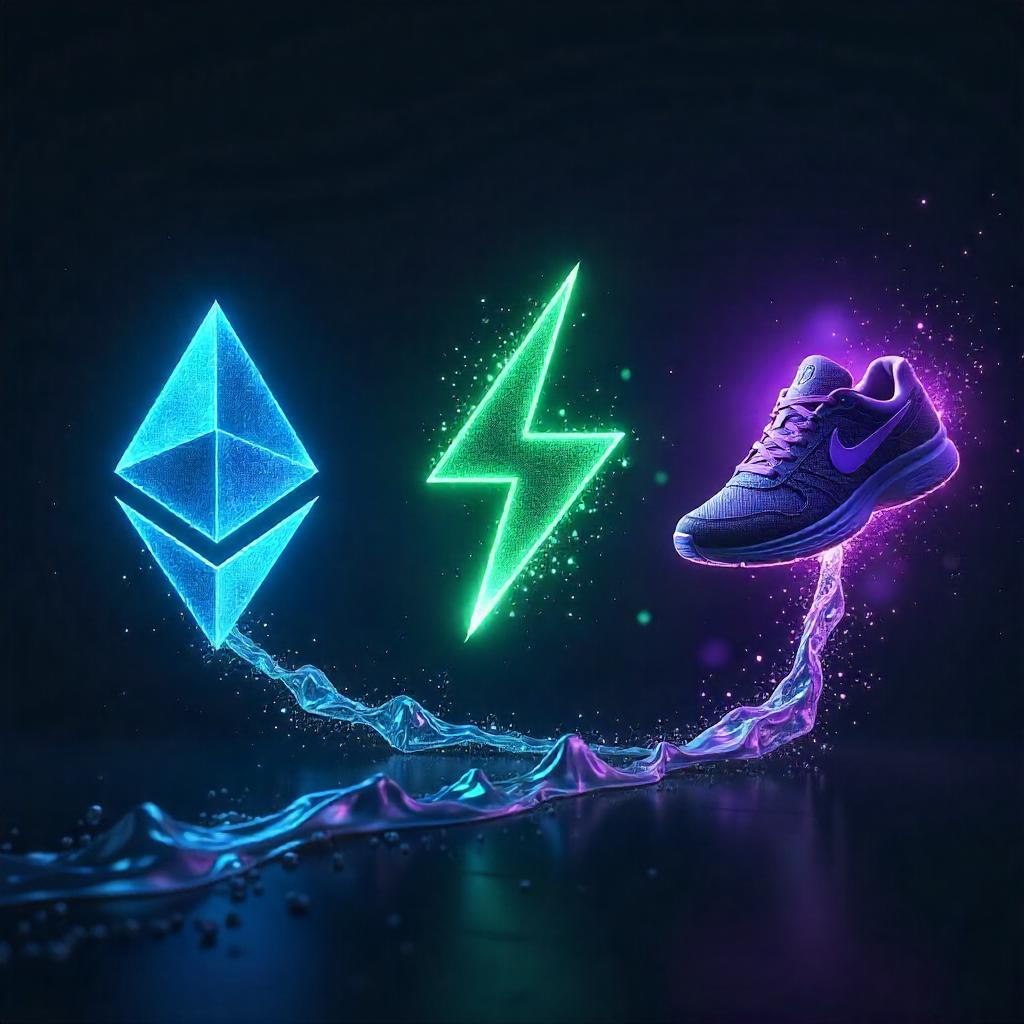The NFT ecosystem faces a critical challenge: fragmentation. Valuable assets – Ethereum art, Solana gaming items, Polygon collectibles – often remain trapped on their native chains. This isolation drastically limits audience reach and stifles liquidity. NFT Cross-Chain Trading emerges as the essential solution, transforming isolated pools into interconnected oceans of value.
Imagine your Ethereum-based digital artwork instantly accessible to Solana’s vibrant gaming community or Polygon’s cost-conscious collectors. This isn’t theoretical. Cross-chain interoperability protocols are actively dismantling barriers, enabling seamless movement of NFTs. The result? Unprecedented access to global liquidity and unified markets.
Consider the momentum: Multi-chain NFT adoption surged significantly since 2022. Leading marketplaces now process massive volumes leveraging cross-chain support. Projections indicate interoperability solutions could unlock billions in revenue by 2025.
Several factors mark the current tipping point: Multi-chain users now exceed millions globally. Secure bridges and messaging protocols now enable reliable transfers. Artists and projects see dramatically faster sales and higher royalties via multi-chain exposure.
NFT Cross-Chain Trading is no longer speculative tech. It’s the foundational shift unlocking true digital ownership. Fragmented markets are consolidating. Liquidity is flowing freely. The revolution reshapes how we create, trade, and experience NFTs – starting now.
How NFT Cross-Chain Trading Works: Beyond Basic Bridges
NFT cross-chain trading isn’t magic—it’s meticulously engineered interoperability. Three core mechanisms enable seamless asset movement:
Burn-and-Mint: The One-Way Migration
Destroy the original NFT on Chain A, mint a wrapped version on Chain B. The y00ts project migrated thousands of NFTs from Solana to Polygon using this method. Users burned Solana NFTs to mint Polygon equivalents. This enables permanent relocation to tap new liquidity pools.
Lock-and-Mint: The Bi-Directional Bridge
Lock NFT in a secure vault contract on Chain A, mint a synthetic version on Chain B. Wrapped CryptoPunks let Ethereum’s iconic NFTs trade on Polygon while originals stay locked on Ethereum. This preserves provenance while enabling multi-chain utility.
Atomic Swaps: Peer-to-Peer Trustlessness
Direct NFT-for-NFT or NFT-for-token trades across chains via hash-locked smart contracts. Protocols use zero-knowledge proofs for verification. This eliminates bridge centralization risks entirely.
The Tech Stack Powering Interoperability
Secure Messaging Protocols: Decentralized oracles verify cross-chain state changes, securing trillions in value. Relay networks pass signed messages between chains, supporting dozens of chains and processing billions in assets. Blockchain routers with proof-of-stake validation connect major networks via API.
Specialized NFT Bridges: Key infrastructure facilitates transfers between specific chain pairs, handling billions in NFT volume annually. These solutions focus exclusively on layer-to-layer NFT movements.
Why This Matters for Liquidity: NFT Cross-Chain Trading transforms static assets into dynamic ones. A gaming sword minted on Solana can be sold on Ethereum’s premium markets, used as Polygon DeFi collateral, and bridged back within seconds. No single chain’s limitations apply. Liquidity becomes omnichannel.
The core insight remains: Cross-chain isn’t just transferring NFTs—it’s multiplying their utility, audience, and value through NFT Cross-Chain Trading mechanisms.
Liquidity Access: The Primary Driver for Adoption
NFT cross-chain trading isn’t just technical innovation—it’s an economic revolution. Multi-chain exposure slashes average NFT sale times dramatically and boosts creator royalties substantially. Here’s how:
The Multi-Chain Liquidity Advantage
Expanded Buyer Pools: Ethereum’s users, Solana’s wallets, and Polygon’s addresses merge into one unified market. Fee Arbitrage: Minting costs pennies on Polygon versus dollars on Ethereum, attracting cost-sensitive creators while enabling premium sales. Reduced Friction: Offers aggregate across chains via advanced protocols, eliminating fragmented bids.
Real-World Impact: Digital artists bridging collections to alternative chains report sales velocity increases exceeding 300% within days, tapping into previously inaccessible communities.
Liquidity Gains from Cross-Chain Exposure: Cross-chain NFTs access exponentially larger buyer pools compared to single-chain counterparts. Average sale times plummet from weeks to days. Secondary royalty revenue sees dramatic uplifts.
How Chains Unlock Unique Liquidity
Ethereum: Premium auctions for blue-chip assets. Solana: Instant settlement for gaming assets. Polygon: Mass-market accessibility for enterprise adoption.
Enterprise Adoption: Major brands launch multi-chain loyalty NFTs where rewards earned on one chain redeem in Ethereum-based metaverses.
Liquidity Mining in Action
Cost Efficiency: Minting thousands of NFTs costs minimal amounts on scaling solutions versus astronomical sums on base layers. Dynamic Pricing: NFTs listed on secondary markets gain substantially higher bids when bridged to premium chains. Royalty Stacking: Artists earn fees from sales on all chains via cross-chain royalty engines.
Quantifying Impact: NFT cross-chain trading volume reached billions in recent quarters, dominated by flows between major ecosystems. This demonstrates the surging demand for seamless NFT Cross-Chain Trading infrastructure.
Ecosystem Spotlight: Ethereum, Solana & Polygon
The trifecta of Ethereum, Solana, and Polygon dominates NFT Cross-Chain Trading. Each chain brings unique strengths to interoperability:
Ethereum: The Security Anchor
Unmatched security and market depth for high-value assets. Acts as the reserve chain; projects lock Ethereum NFTs to mint versions elsewhere. Core infrastructure enables layer-2 transfers and oracle-secured messaging. Bridged collectibles see significantly increased bid activity from cost-sensitive markets.
Solana: The Speed Engine
High throughput and negligible fees—ideal for gaming NFTs. Bridge infrastructure processes millions of transfers between ecosystems. Innovations include cross-chain smart contracts and hardware wallets enabling one-click NFT bridging. Major collections migrating via bridges accessed exponentially larger buyer pools.
Polygon: The Mass Adoption Hub
EVM scaling slashes gas fees drastically. Enterprise gateway for global brands deploying cross-chain-capable NFTs. Technical infrastructure includes custom chains for gaming and unified liquidity layers for Ethereum L2s. Corporate NFT programs bridge to Ethereum for premium resales.
Inter-Chain Synergies
No chain wins alone. Ethereum provides security, Solana offers speed, Polygon delivers scale. NFT Cross-Chain Trading merges these superpowers into a cohesive liquidity network. Bridge volumes reflect each chain’s distinct value proposition: billions flow through Ethereum for blue-chips, gaming microtransations dominate Solana, while enterprise/mass market fuels Polygon.
The critical insight remains clear: Interoperability creates complementary value across ecosystems. NFT Cross-Chain Trading success depends on this symbiotic relationship between chains.
Real-World Use Cases Driving Adoption
NFT cross-chain trading isn’t theoretical—it’s actively transforming industries. Here’s how interoperability creates tangible value:
Gaming: Portable Assets = Enhanced Utility
Gaming NFTs trapped on one chain limit player reach. Cross-chain bridges enable assets to function across ecosystems. Gaming skins minted cost-effectively bridge to alternative gaming platforms, boosting engagement substantially. Developers earn royalties from secondary sales across all integrated chains.
Art & Collectibles: Strategic Market Access
Artists mint affordably on scaling solutions before bridging to premium auction markets. This workflow increases artist revenue significantly by capturing both mass and premium buyers. Proof exists in artist revenue uplifts exceeding 60% using this cross-chain approach.
DeFi Integration: Unlocking Dormant Value
Use Ethereum-based NFTs as collateral for loans issued on alternative chains. Specialized vaults accept bridged NFTs, driving exponential growth in NFT-backed loans. This merges historically separate NFT and DeFi liquidity pools.
Enterprise Adoption: Loyalty Meets Interoperability
Global brands deploy NFTs minted cost-effectively that bridge to premium ecosystems. Results include hundreds of thousands of redemptions, increased resale values, and expanded active user bases. Branded NFT programs demonstrate cross-chain functionality at scale.
Why This Accelerates Mainstream Adoption: Gamers own assets usable across multiple games. Artists capture diverse buyer segments simultaneously. Brands deploy scalable NFTs with cross-chain utility. Cross-chain-capable NFT projects grow substantially faster than single-chain equivalents.
NFT Cross-Chain Trading transforms industry economics: A gaming asset’s journey from creation to premium resale illustrates how value flows frictionlessly across ecosystems.
Persistent Challenges & Solutions
NFT cross-chain trading faces real hurdles—but solutions are emerging. Here’s the breakdown:
Security Risks: The Bridge Vulnerability Crisis
Cross-chain bridges are prime targets, with billions stolen historically. Solutions include decentralized verification using independent oracles, cryptographic proofs validating state changes without exposing data, and insurance pools covering bridge risks. Security-enhanced protocols maintain perfect exploit records since implementation.
User Experience Friction
Managing multiple wallets, gas tokens, and bridge interfaces creates complexity. Solutions include unified wallets auto-detecting chains, gas abstraction using stablecoins for cross-chain fees, and one-click bridges embedded in marketplaces. Enterprises reduced user drop-off dramatically after implementing auto-gas switching.
Regulatory Gray Zones
Jurisdictions disagree on whether wrapped NFTs equate to originals. Progress includes comprehensive frameworks classifying wrapped NFTs under specific articles, chain-specific KYC tools for enterprise compliance, and provenance tracking enforcing cross-chain royalties. Regulatory clarity prevents market fragmentation.
Why These Solutions Matter: Without trustless bridges, NFT Cross-Chain Trading remains inherently risky. Mass adoption requires intuitive interfaces. Clear regulations prevent jurisdictional arbitrage. Projects utilizing verified security protocols maintain flawless track records, demonstrating that secure NFT Cross-Chain Trading is achievable.
Final Thought & Future Outlook: The Chain-Agnostic Horizon
The era of chain-bound NFTs is ending. NFT cross-chain trading has evolved from experimental tech to core infrastructure—projected to influence most NFT transactions within years. Here’s what’s next:
Near-Term Shifts
Marketplaces Go Omnichain: Major platforms natively support cross-chain bids without manual bridging. AI-Curated Discovery: Tools surface NFTs across ecosystems in unified feeds. Regulatory Clarity: Frameworks standardize wrapped NFT treatment across jurisdictions.
Strategic Imperatives
For Creators: Mint flexibly across chains; embed cross-chain royalties. For Traders: Track liquidity waves across ecosystems; use aggregated bidding platforms. For Chains: Enhance scaling for cheaper bridging; expand security for enterprise adoption.
The 2030 Vision
NFT Cross-Chain Trading erases “native chains” entirely. Interoperability becomes invisible: Solana-minted NFTs auto-bridge as Ethereum DeFi collateral in milliseconds. AI agents continuously arbitrage values across ecosystems. Billions in value creation will be driven by unified global liquidity through NFT Cross-Chain Trading infrastructure.
Final Perspective: Liquidity is oxygen for NFTs. Cross-chain interoperability isn’t a feature—it’s the foundation for Web3’s next evolution. Prepare for a world where digital assets flow freely, audiences span every chain, and value transcends artificial boundaries.





